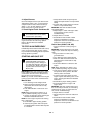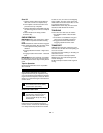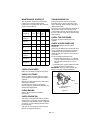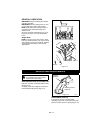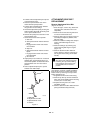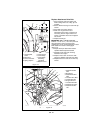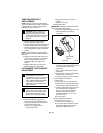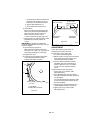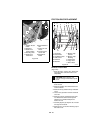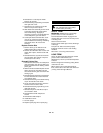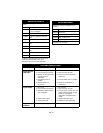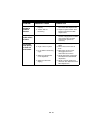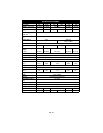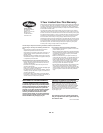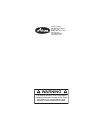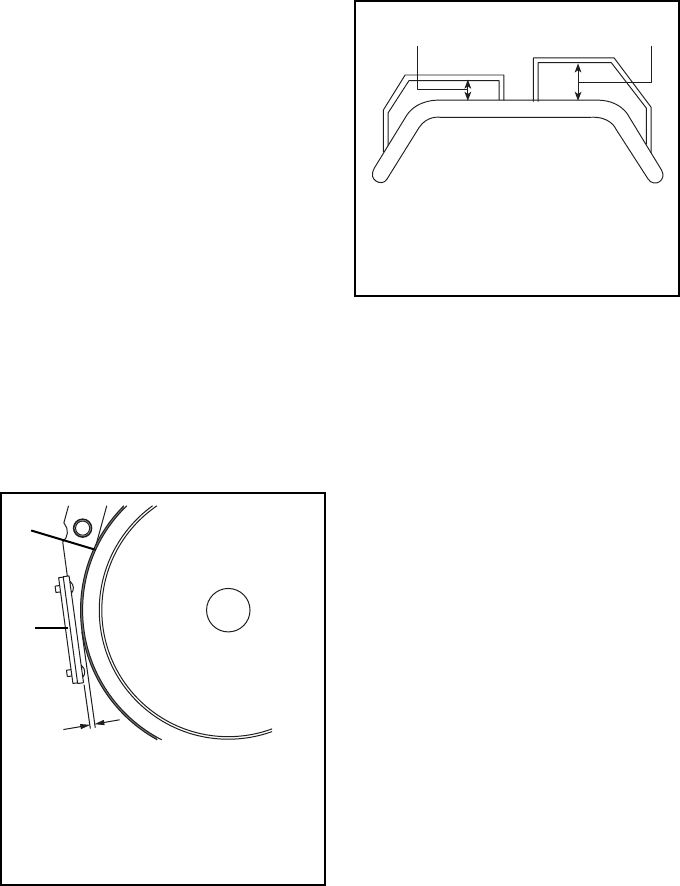
GB - 24
c. To decrease the distance between the
clutch bail and handlebar, move the
idler away from the attachment belt.
d. Tighten idler adjustment nut.
e. Check clutch bail measurement.
6. Check Brake
When the clutch bail is disengaged, the
brake must contact the attachment belt.
When the clutch bail is engaged, the
brake must be more than 1/16 in.
(1.6 mm) away from the belt (Figure 21).
7. Repeat steps 3–6 until attachment clutch
bail distance and brake contact are
correct.
IMPORTANT: If attachment clutch/brake
cannot be adjusted within tolerances, see your
Dealer for repairs.
8. Check belt finger clearance.
With clutch bail engaged, belt fingers
should be 1/16–1/8 in. (1.6 - 3.0 mm) from
belt. Adjust belt fingers as necessary.
9. Replace belt cover.
10. Check that auger/impeller stops within
3 seconds after attachment clutch/
impeller brake bail is released.
TRACTION DRIVE CLUTCH
ADJUSTMENT
If drive slips, adjust traction clutch to
compensate for friction disc wear.
To test traction clutch (Figure 22):
1. Put unit in first forward speed.
2. Without engine running, push unit forward
while slowly moving the traction drive
clutch bail toward the handlebar.
3. Measure distance between bail and
handlebar when the wheels begin to
brake. If distance is not 2-1/8 ± 3/8 in.
(5.4 cm ± 9 mm), adjust the traction
clutch.
To adjust traction clutch (Figure 23):
1. Loosen jam nut on traction cable
adjustment barrel.
2. Turn adjustment barrel up the cable to
decrease the distance between clutch bail
and handlebar.
Turn the adjustment barrel down the cable
to increase the distance between clutch
bail and handlebar.
3. Check traction clutch bail distance and
repeat adjustment steps if necessary.
4. Tighten jam nut on traction cable
adjustment barrel.
Figure 21
1.Drive Brake
2.Brake Shoe and Pad
1
2
1/16 in.
(1.6 mm)
OS2030
Attachment
Clutch Bail
OS2490
Traction Drive
Clutch Bail
Figure 22
2-1/8 ± 3/8 in.
(5.4 cm ± 9 mm)
3-1/2 ± 1/8 in.
(8.9 cm ± 3 mm)



